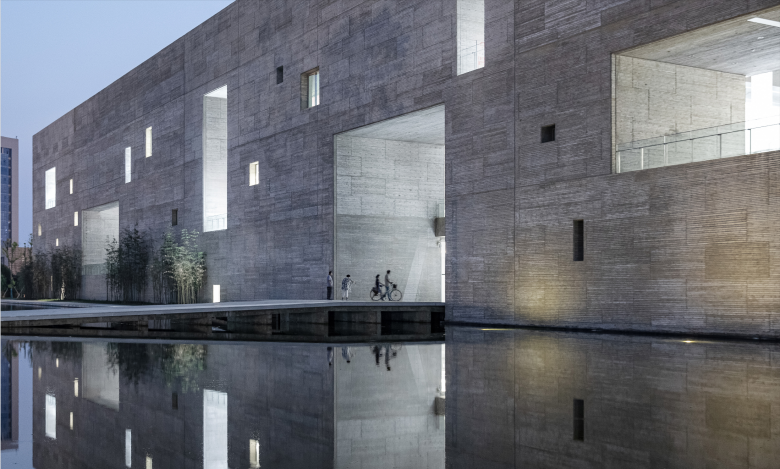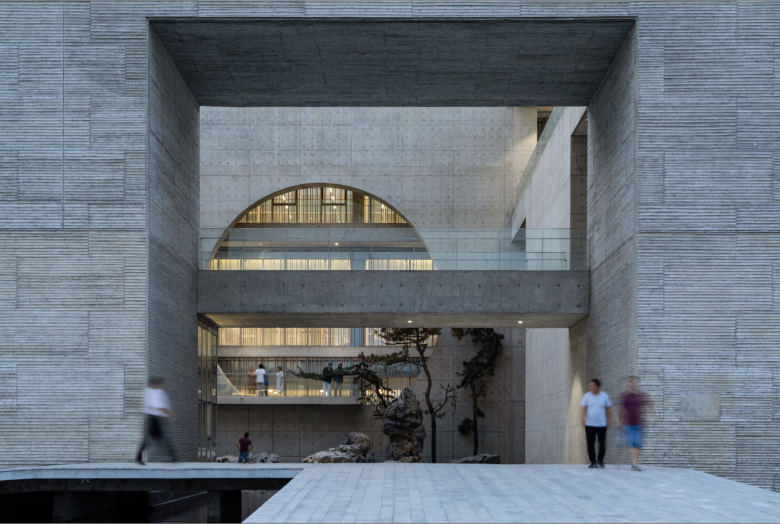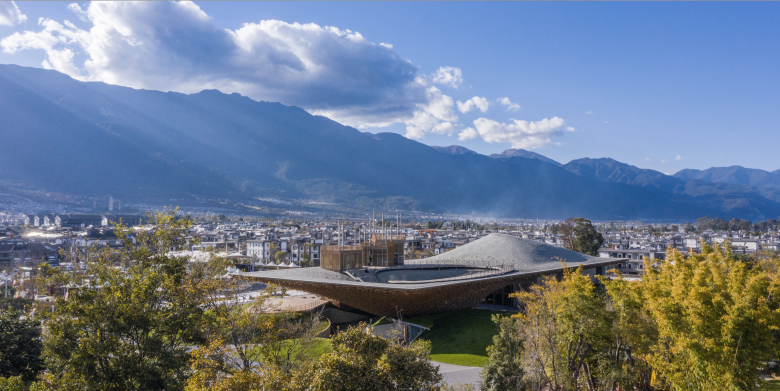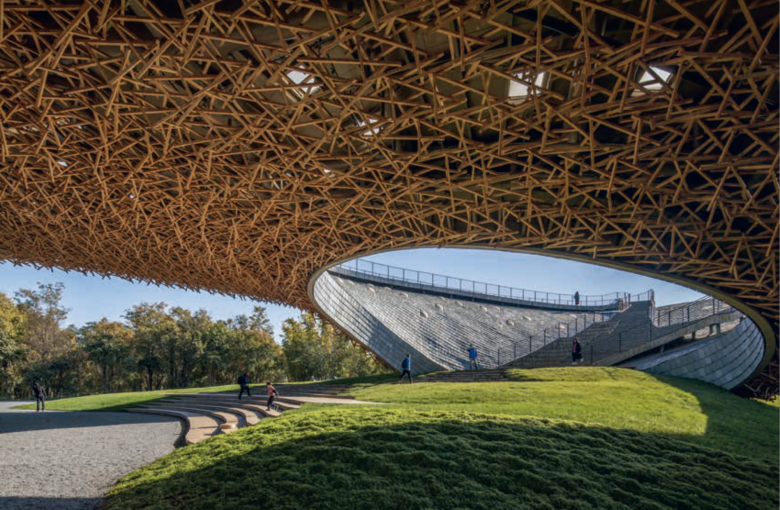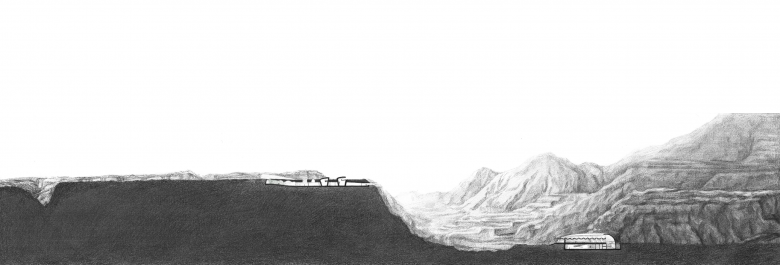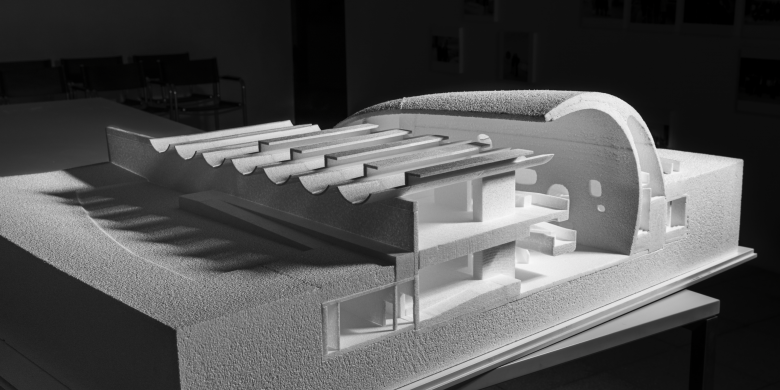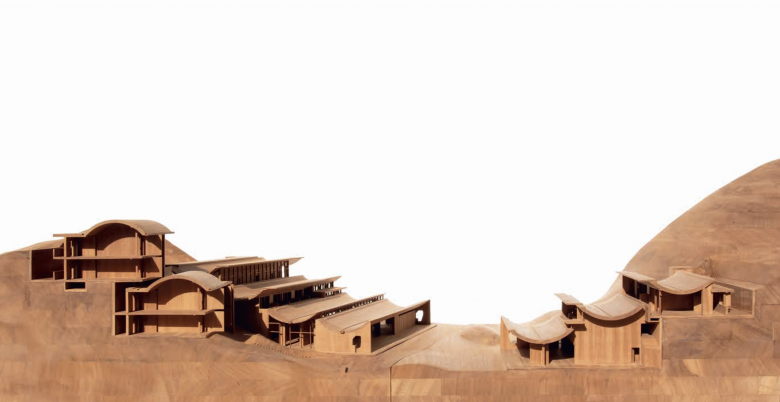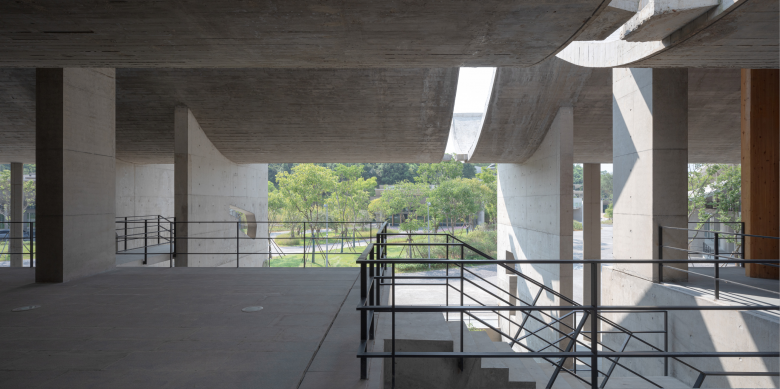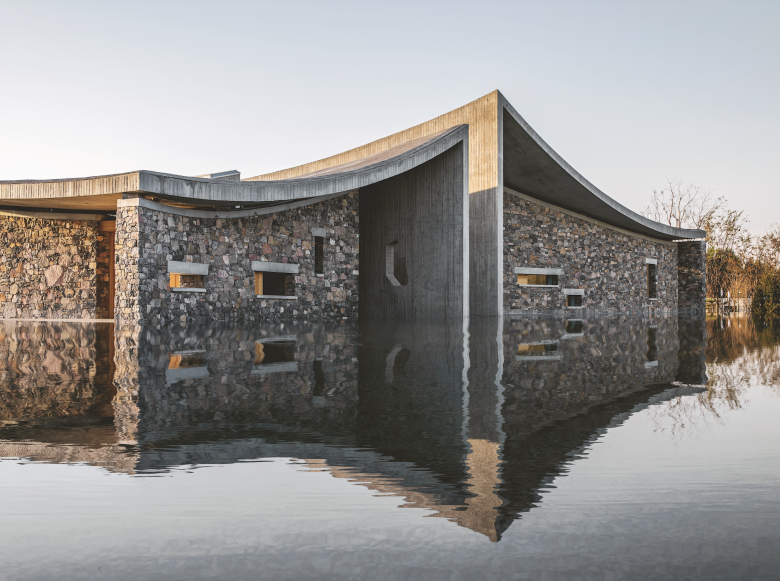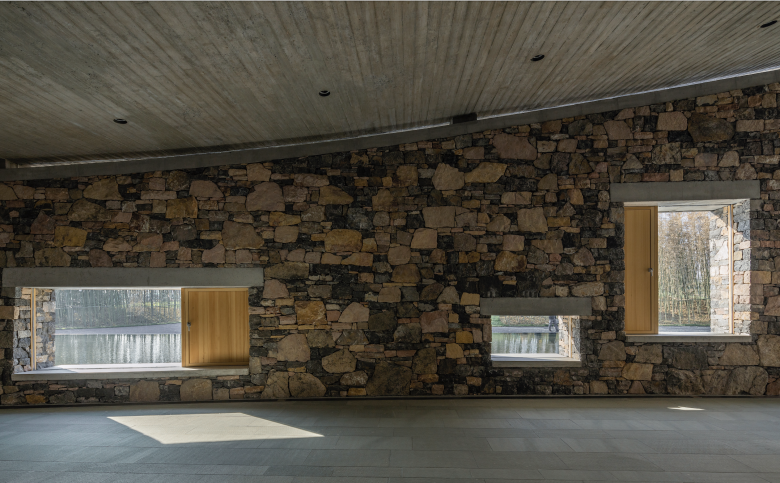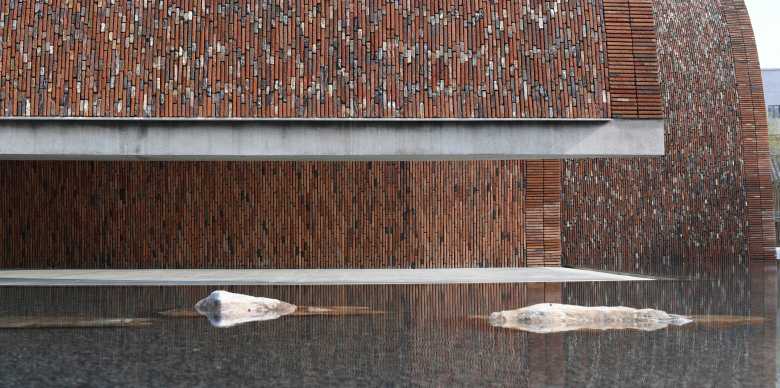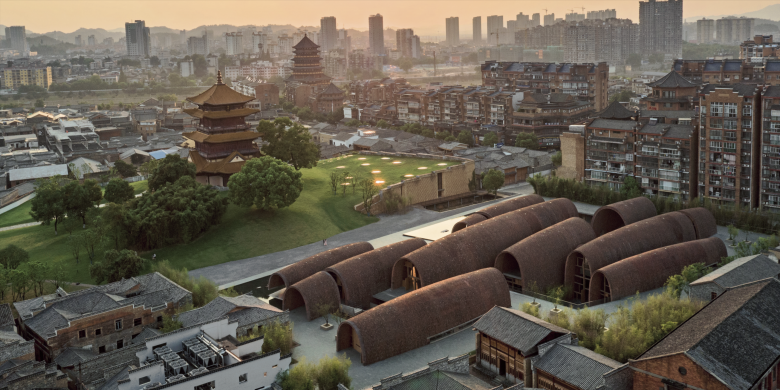“Le Corbusier’s thoughts had a subtle influence on me”
The exhibition ‘POETIC IMAGINATIONS. Interweaving Architecture with Traditional Values’ by Beijing’s Studio Zhu-Pei will open at Aedes Architecture Forum in Berlin on February 16, 2024. The exhibition’s curator, Eduard Kögel, spoke with Zhu Pei about the firm’s architecture in advance of the opening.
Zhu Pei: Firstly, the criteria are based on my design theory ‘Architecture of Nature’. It is not only focused on a poetical architectural culture but also on a response rooted in traditional Eastern natural philosophy to the challenges facing humanity today, such as climate change and regional cultural disruption through technological development. Secondly, it continues the discourse on these and other ideas initiated by my solo exhibition at Aedes Architecture Forum 2017.
In my work as an architect, I am trying to respond to climate change and the disruption of regional culture. Climate change may seem like a technical problem, but in reality, it is a cultural problem. Our buildings and cities are no longer cleverly or truly planned, instead, they show a trend towards being planned as theme parks. With my ‘Architecture of Nature’ theory, I try to reflect on the relationship between tradition and modernity from a cultural perspective, so that architecture can draw energy from tradition and nature and be rooted in the earth that humanity depends on to survive.
I was moved by the late work of Le Corbusier, who regarded architecture as art and was inspired by regional culture. He once said, “Creativity doesn’t come from anywhere, it comes from the lessons of history”. Le Corbusier’s thoughts had a subtle influence on me.
This point is about what constitutes the essence of architecture. Architecture is the art of reflecting on purpose, space, structure, material and time. I always begin my conception of architecture with sectional sketches. Firstly, it’s about understanding the building purpose and the programme. Secondly, I imagine what kind of spatial form is suitable for a certain purpose. Next, I think about what kind of structural concept is suitable for this spatial form, and then I imagine what materials are suitable for the construction. Of course, certain locations, orientations, wind directions, mountains, lakes, open fields, etc., also influence the design of the architecture from the outside. The two dimensions, from inside to outside and from outside to inside, are not simple binary thinking, but complex processes of thought, imagination and design.
The inspiration comes from traditional rural settlements and the special location in the valley. The Zijing Conference Camp is located in the suburbs of Jingdezhen in a valley surrounded by mountains, and the site is very complex both horizontally and vertically. Therefore, building types and typologies play an important role in interpreting the complicated context. Settlements consisting of numerous simple, geometric buildings need a solution for a complex site. Models can be found in the topological responses found in local historical villages.
By using two simple concrete shear walls with an inverted concrete arch segment to support the walls a structural unit was created, the additive arrangement of which adapted to the vertical dimensional changes of the hills.
Forming a structural unit as an additive arrangement of two simple concrete shear walls braced by an inverted concrete arch segment, makes it possible to adapt to the vertical dimensional changes of the hills. Simultaneously, the spacing between the structural units created opportunities for natural lighting and ventilation. The buildings of the conference camp are arranged in the form of a settlement rather than as a singular large form, emphasising the flexibility of this typological arrangement in the horizontal dimension to adapt to the complex topography of the valley.
I have always had a strong feeling that architecture is part of the landscape, whether in urban or rural areas. It is obvious to me that architecture should not imitate natural landscapes. On the contrary, it should be abstract and of simple geometries, otherwise it loses the character of architecture. Today we see many buildings that want to imitate nature, but such endeavours are actually more against nature. What interests me most is the dialogue or tension between artificial architecture and natural landscapes.
I am always interested in the contemporaneity inherent in the history and traditions of a region, and not in its superficial past. So, when I design architecture, I always try to find the wisdom and inspiration behind history and tradition and translate these inspirations into a contemporary architectural language.
The creative process of the Imperial Kiln Museum strongly follows my design theory ‘Architecture of Nature’. To summarise, it is a contemporary translation of the roots of local culture and climate. Firstly, it succeeded in reshaping the relationship between porcelain, people and kilns, which in turn contributed to the success of local porcelain art and culture. Secondly, the Imperial Kiln Museum is strongly inspired by the traditional house typology of the region, namely its natural ventilation through narrow alleys and vertical courtyards. For the museum, we successfully designed a horizontal wind tunnel with the vaults, and achieved a chimney effect with sunken courtyards, thereby creating a three-dimensional natural ventilation system in both horizontal and vertical directions and achieving the goal of avoiding the use of air-conditioning in this extremely humid and hot environment. The Imperial Kiln Museum can be seen as an exemplary experimental application of my design theory ‘Architecture of Nature’.
Today, the Imperial Kiln Museum is the most popular museum in China, and people appreciate it because they can strongly feel the connection between tradition and innovation when taking a tour.
